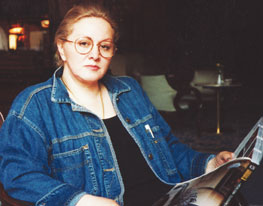ALICE NAVASARGIAN

Now we have Navasargian’s third book, unique for the impressive list of eminent personalities it spotlights, the fascinating historical information it offers, and the long period of time it covers: from the 12th century to the present day. The book captivates the reader; it contains remarkable pages portraying the great medieval physician Mkhitar Heratsi (12th century), the 16th-century historiographer Arakel Davrizhetsi, the best Armenian translator of Shakespeare Hovhannes Masehyan, and other distinguished Armenians such as the merchants of New Julfa who were quite powerful and well-known not only in Persia but also in the Caucasus, Russia, and Europe.
Alice Navasargian has also given an account of the activities of Persian Armenians in Venice; she has put a special emphasis on the story of the establishment of the famous Murad-Rafaelian School in Venice where many artists, writers, military commanders, and public figures studied. New Julfa is described as an important center and the birthplace of a number of prominent statesmen, writers, painters, merchants, and benefactors who left indelible traces in history. The celebrated Lazarian family, too, was descended from the class of the merchants of New Julfa and afterwards several generations of the Lazarians lived in Russia. They were high officials in the Russian court, leading industrialists, benefactors, and founders of educational institutions.Suffice it to mention some of the great personalities and families figuring in the book to make it clear what a major role Persian Armenia played in the cultural life of the Armenian people: the Tumanian and Shahrimanian families, Hakob Hovnatanian, Alexander Mantashian, Raffi, Vardges Sureniants, Vrtanes Papazian, Hrachia Acharian, Yeghishe Charents, Ivan Galamian, and many others.
Together with the author of the book, we the readers are filled with pride and deep respect for the Persian Armenians’ dignity, diligence, and desire for knowledge.Alice Navasargian, the author of this valuable book submitted to the readers judgment certainly deserves highest praise. Indeed the material she has so carefully and scrupulously gathered is a golden bridge that connects people, times, and countries with one another and helps to create the annals of the culture of the Armenian Land.
Professor Alina Pahlevanyan, Honored member of Arts and Culture of Armenia